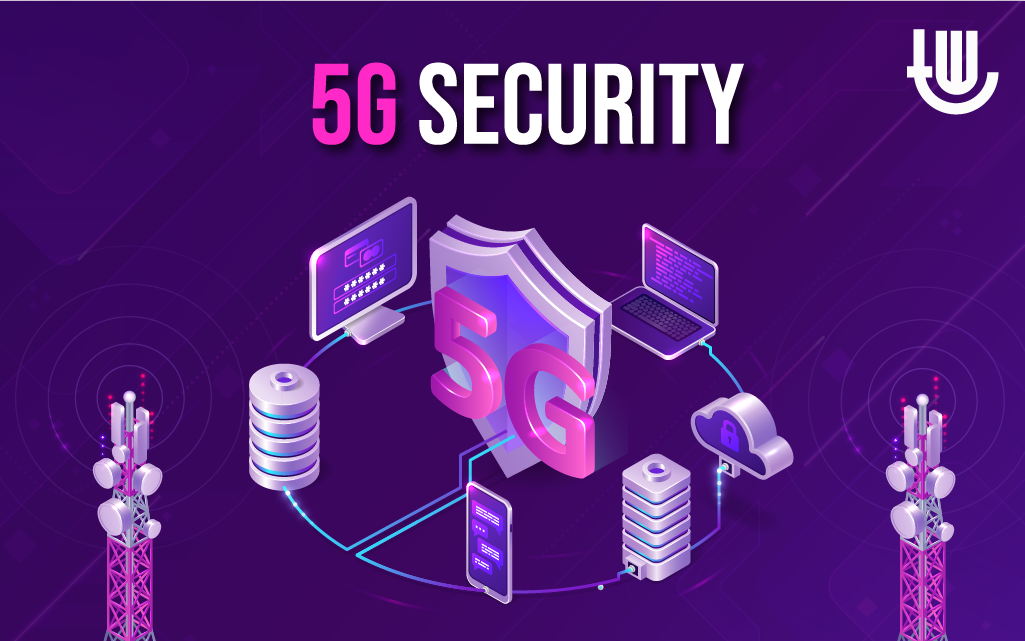
One of the fastest communications providers in the market is 5G, the successor to 4G, thereby offering the best connectivity globally. But with new technologies come new vectors of risks that are constantly on the radar of cybercriminals. While the security issues that emerged in previous technologies, such as 2G/3G/4G, have been significantly taken care of, there’s always a slight possibility of loopholes waiting to be uncovered. In this article, we have discussed some features you need to know about 5G security and how it is resilient and robust to various known attacks.
A Quick Introduction to 5G
5G is the next generation of wireless technology which reduces latency and ensures high-speed connectivity. This is achieved through wider bandwidths and OFDM (Orthogonal Frequency Division Multiplexing). This technique transfers the data through different sub-channels, which reduces noise and other distractions.
Additionally, some cybersecurity implementations ensure that 5G is safer and resilient to attacks by adversaries, which will be discussed next. Read on to know more.
Features You Need to Know About 5G Security
By default, encryption of the data with AES encryption
5G networks use end-to-end encryption using the New Radio Encryption Algorithm (NEA) and New Radio Integrity Algorithm (NIA). These are in combination with AES, Snow 3G Cipher, and ZUA. The encryption ensures that the data of users which is being transmitted over the network remains secured and unintercepted.
Encryption ensures that the data is protected from unauthorized access. Even if a single channel is compromised, other channels are secured through E2EE.
Understanding Network Slicing and protecting for each slice
The 5G communication is based on and supports network slicing. This concept is based on creating multiple networks or ‘slices’ within a shared network. This allows operators to ensure efficiency and data delivery.
However, several security issues arise with network slicing, such as hackers trying to sniff or access the data within each slice or exploiting the core components of the network. These attacks can result in a breach of confidentiality or denial of service in 5G systems.
Virtualized Infrastructure over Cloud
Virtualizations are highly used to deploy and set up new services based on a hypervisor. 5G networks heavily rely on virtualized infrastructure over the cloud, enabling more efficient resource utilization.
The main security advantage that comes with virtualization is isolation. Isolation of virtual sections when compromised minimizes the impact. This becomes helpful in the event of cybersecurity attacks such as DoS or data breach.
Various cloud solutions are packed with threat monitoring and detection, providing real-time updates on the security posture. However, in 5G, it is essential to ensure that regular patches and awareness of best practices in cloud security can help evade threats.
Authentication
5G networks use more advanced authentication mechanisms such as EAP-AKA and 5G-AKA. This provides an upper hand in terms of security than previous generations of mobile networks.
This new feature in 5G uses mutual authentication, where the user and the network authenticate each other through the challenge-response protocol. This helps to prevent unauthorized access.
The Authentication Server Function (AUSF) was also introduced to 5G in 2022.
Vendors associated with 5G security
Companies that provide 5G communication services and enablement must ensure that their infrastructure is compliant and regular audit procedures are conducted to ensure nothing directly compromises the entity and network security.
Vendors that support 5G technology implementation should get their security assessment and certifications done to ensure safety. If a vendor is compromised, then a supply chain attack can propagate further.
General Steps for Mitigation
Regular security testing and patch management can reveal multiple underlying issues subjected to new exploits. Other steps to ensure security includes frequent monitoring and implementation of the following:
- Network segmentation
- Strong authentication and authorization mechanisms
- Encryption
- Intrusion detection and prevention systems
- Continuous monitoring to detect and respond to security incidents promptly.
For the Consumers of 5G
Technology changes quickly, and so do the risks associated with it. It is essential as consumers to remain vigilant and take appropriate precautions to protect their personal information and devices.
Towards the Conclusion
As we conclude on understanding the latest facts on 5G security, the range of features used in the current module is well-equipped to protect against cyber threats and attacks. Everyone, including the suppliers and consumers of 5G security, must work in collaboration to be safe and practice cyber safety. In that case, 5G can be one of the best recent technological advancements. Hope you liked the article; let us know what you think.

Author Bio: This article has been written by Rishika Desai, B.Tech Computer Engineering graduate with 9.57 CGPA from Vishwakarma Institute of Information Technology (VIIT), Pune. Currently works as Cyber Threat Researcher at CloudSEK. She is a good dancer, poet and a writer. Animal love engulfs her heart and content writing comprises her present. You can follow Rishika on Twitter at @ich_rish99.